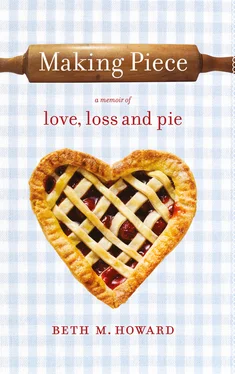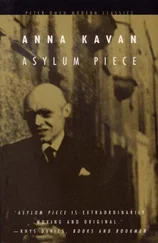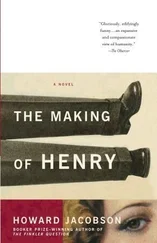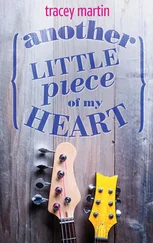Beth Howard - Making Piece
Здесь есть возможность читать онлайн «Beth Howard - Making Piece» — ознакомительный отрывок электронной книги совершенно бесплатно, а после прочтения отрывка купить полную версию. В некоторых случаях можно слушать аудио, скачать через торрент в формате fb2 и присутствует краткое содержание. Жанр: unrecognised, на английском языке. Описание произведения, (предисловие) а так же отзывы посетителей доступны на портале библиотеки ЛибКат.
- Название:Making Piece
- Автор:
- Жанр:
- Год:неизвестен
- ISBN:нет данных
- Рейтинг книги:3 / 5. Голосов: 1
-
Избранное:Добавить в избранное
- Отзывы:
-
Ваша оценка:
- 60
- 1
- 2
- 3
- 4
- 5
Making Piece: краткое содержание, описание и аннотация
Предлагаем к чтению аннотацию, описание, краткое содержание или предисловие (зависит от того, что написал сам автор книги «Making Piece»). Если вы не нашли необходимую информацию о книге — напишите в комментариях, мы постараемся отыскать её.
Making Piece — читать онлайн ознакомительный отрывок
Ниже представлен текст книги, разбитый по страницам. Система сохранения места последней прочитанной страницы, позволяет с удобством читать онлайн бесплатно книгу «Making Piece», без необходимости каждый раз заново искать на чём Вы остановились. Поставьте закладку, и сможете в любой момент перейти на страницу, на которой закончили чтение.
Интервал:
Закладка:
She turned back to the refrigerator and pulled out a plastic bag full of something hard, white and greasy—like Crisco, only denser. “This is lard,” she explained when she saw the puzzled look on my face. “My mom used lard. Some people don’t like it, but that’s how we do it here—half butter, half lard.”
Using her bare hands, Mary worked the butter and lard into the flour. My eyes grew wide. “You use your hands?” I asked. “The merchant marine chef taught me to use knives.”
“Hands work better,” she said. “You work the fat into the flour with your fingers until you have the consistency of large peas.” She talked as she mixed. “This is enough dough for ten pies. We’ll just make one now, but you’ll use the rest of the dough later.” Next, she poured ice water into the flour mix. “The key here is to be light and gentle,” she said. Though there was nothing light and gentle about Mary physically, from the way her hands moved through the dough, it was obvious she possessed a tender, loving side. She lifted the flour from underneath, letting it fall from her fingers to let the water blend in without forcing it.
“Don’t overwork the dough. That’s the biggest mistake people make. They knead it too much. Remember, we’re not making bread. Pie dough only needs to be worked enough to hold it together. You work it too much and it gets tough.” She formed her soft dough into balls, patted them into discs the diameter of cup saucers, then stacked them up next to the tub. She sprinkled flour on each to keep them from sticking together.
“Can you hand me the rolling pin?” she asked, pointing a flour-covered finger toward the corner of the table. Three rolling pins of varying sizes competed for space in a large ceramic crock jammed full with other baking utensils—wooden spoons, rubber spatulas, metal spatulas, lemon graters. “The big one,” she said.
She moved the tub aside and sprinkled the table with flour. “Make sure you have a clean surface to start. The flour will keep the dough from sticking. The same goes for your rolling pin. You want to keep it clean. If the dough gets gunked up on it, scrape it off with a knife. You can also rub your rolling pin with flour.” She sprinkled flour on the top of her dough and started rolling. “Only roll in one direction, starting from the middle and working outward. Don’t roll back and forth. People like to do that and it makes the dough tough.”
As her dough began to flatten, she paused. “Now you want to turn your dough. Lift it up like this.” She demonstrated by picking up the now thinner and wider disc and flipped it over as if it were a pizza. While the dough was still airborne, she quickly ran her hand underneath, dusting the table with more flour. The dough landed on its opposite side, she sprinkled the new top side with flour, and went back to rolling. Her big hands worked quickly, expertly, and yet gently, until the dough was thin, flat and covering most of the table. “My mom had a striped vinyl tablecloth on her kitchen table. We rolled right on it and you would know your dough was thin enough when you could see the red lines through it.”
I leaned over and tried to picture the red lines. As it was, the stainless steel table had no markings to indicate her dough had passed the test, but after many years of pie making she instinctively knew when to stop.
“Do you see these white-and-yellow dots in here?” Mary asked, pointing to an irregular marbled pattern in the flattened dough. “That’s a good thing. You want that. That’s the butter and lard and it will melt into the flour as it bakes. It’s what gives your pie crust the flakiness.”
“That’s good to know,” I said. “My crust has a tendency to be a little hard.”
“That’s because you overwork the dough,” Mary responded.
“Yes. A friend of mine from Iowa, whose 104-year-old grandmother wrote a cookbook, accused me of that. Whenever we make pie together, she yells at me, ‘Don’t manhandle the dough!’”
“We’re going to make apple today. I’ll show you a shortcut that I learned from my mom. We’re going to put this crust in the pie plate now and leave it there. We’ll roll out the top later, when we’re ready for it.” Dough overflowed from the plate, draping over the edge of the dish and onto the table. Mary noticed me examining its droopy excess.
“I’ll show you how to deal with that,” she said, and came back with a large pair of scissors. “You can use a knife to trim it, or you can just use these.” She snipped at the dough with the confidence of a Beverly Hills hairdresser until she had gone all the way around the pie plate. “Leave an extra inch from the rim because we’re going to need it when we put on the top.
“Okay, Pie Girl. Are you ready to peel some apples?” Mary motioned to the boxes of Granny Smiths stacked up in front of the refrigerator. “Here, take a knife and have a seat.” She handed me a paring knife and grabbed another one for herself. We sat on milk crates in the middle of the tiny baking room with a giant silver bowl between us. I picked up an apple and started to cut out the stem. “You don’t have to do that. Leave the stems and I’ll show you the shortcut I was talking about when we’re done peeling.”
I took a breath and moved my knife around the apple, the waxy green skin coming off easily with the sharp blade. “I guess my knives at home must be pretty dull,” I said. “This one is working really well.” I put my one skinned apple into the bowl, next to the four Mary had already peeled, and started in on another.
“One pie takes about seven or eight of these large apples,” Mary explained as we filled the bowl. “Now here’s what I want to show you—the shortcut.” Taking an apple in her mama-bear hand, she sliced the apple directly into the pie shell.
“Don’t you slice the apples into a bowl and mix them together with the sugar and cinnamon?” I asked. “That’s what that old pastry chef taught me.”
“No, that’s the way most people do it, but this is what my mom taught me. It’s easier and faster this way. Make sure you slice them all the same size so they cook evenly. You don’t want them too small or they’ll bake down too fast. And if they’re too big, they won’t bake through. We’re going to put in half of the apples and half of everything else—sugar, cinnamon, pinch of salt and enough flour to thicken the juice—and then repeat it.”
She sliced, sprinkled and pinched. Then, just as she promised, she sliced more apples and dumped the remaining half of the other ingredients on top. “Don’t worry. It will all blend together as it bakes.” Reaching for a stick of butter, she cut off an inch and placed it on top of the apple pile. “Don’t forget a pat of butter before you lay the top crust over it.”
“That’s a lot of apples,” I commented on the slices stacked up into a mountain peak.
“You don’t want to be stingy, but you also don’t want your apples too high because they will shrink as they bake. The crust will stay high, and you don’t want to be left with a big gap underneath.” She rolled out another ball of dough until it was flat, round and a few inches wider than the pie plate.
“To pick up the dough you can fold it in half like this.” She lifted an edge and slowly brought it to meet its opposite side, ending up with a half-moon shape. “Or you can use the rolling pin by pulling the dough onto it and move it over to your pie.” She lifted the half-moon by its edges and dragged it over to the waiting pie without breaking it. She lined it up with the center and unfolded it, until it laid flat across the fruit-filled heap.
My previous pies never had that kind of excess dough hanging off the sides, nor had I ever managed to roll my dough as smooth as hers. My pie dough was always cracked and crumbly with jagged edges that barely reached the edge of the pie plate. My dough required an all-star wrestling match to get the top and bottom crusts to join together. But this pie already looked like a masterpiece—the outline of apple wedges visible, snugly tucked under their supple blanket of dough. And she wasn’t finished with it yet.
Читать дальшеИнтервал:
Закладка:
Похожие книги на «Making Piece»
Представляем Вашему вниманию похожие книги на «Making Piece» списком для выбора. Мы отобрали схожую по названию и смыслу литературу в надежде предоставить читателям больше вариантов отыскать новые, интересные, ещё непрочитанные произведения.
Обсуждение, отзывы о книге «Making Piece» и просто собственные мнения читателей. Оставьте ваши комментарии, напишите, что Вы думаете о произведении, его смысле или главных героях. Укажите что конкретно понравилось, а что нет, и почему Вы так считаете.












